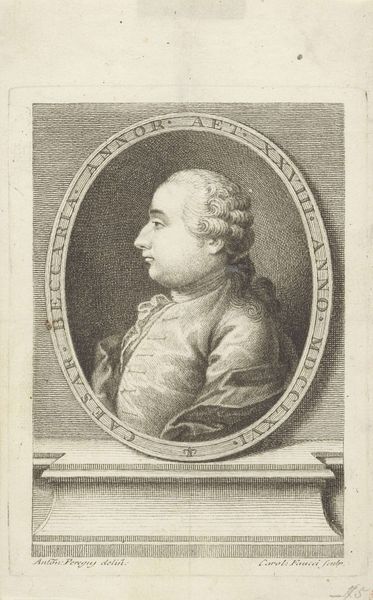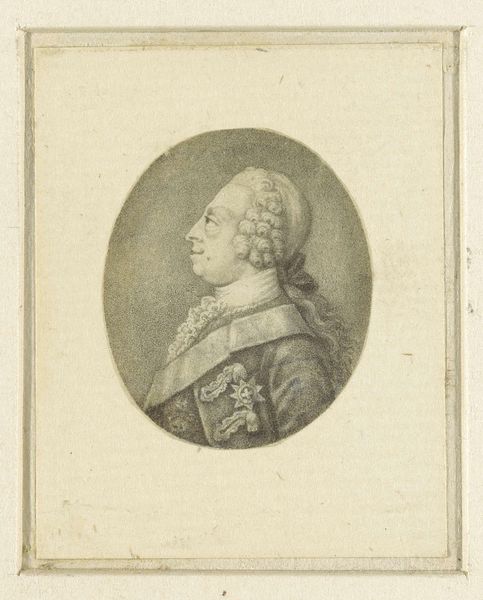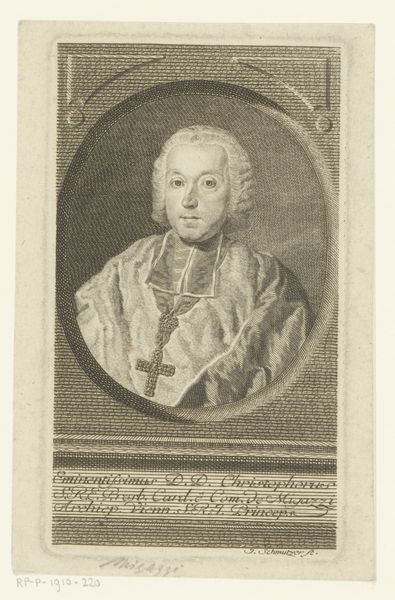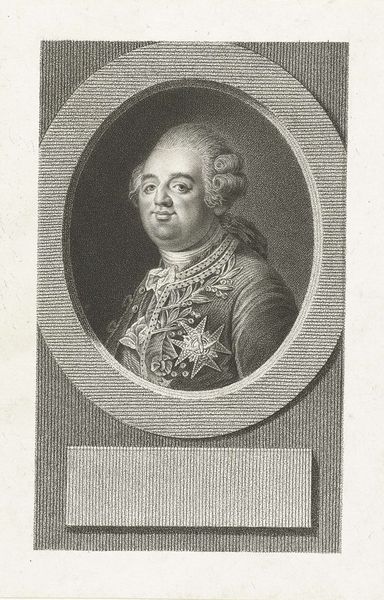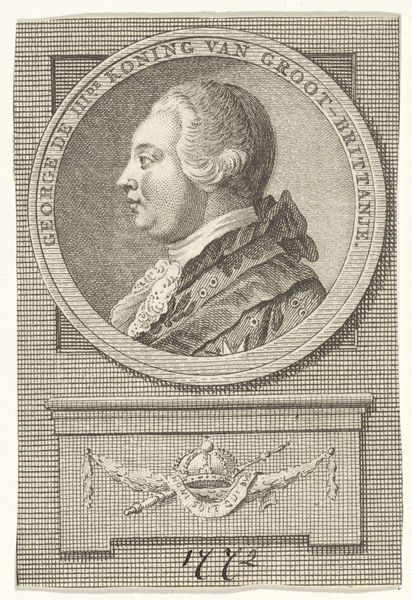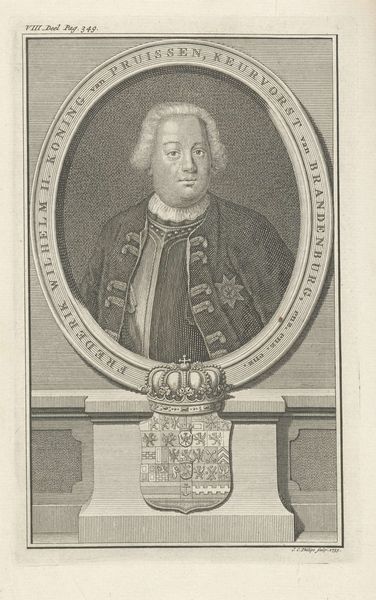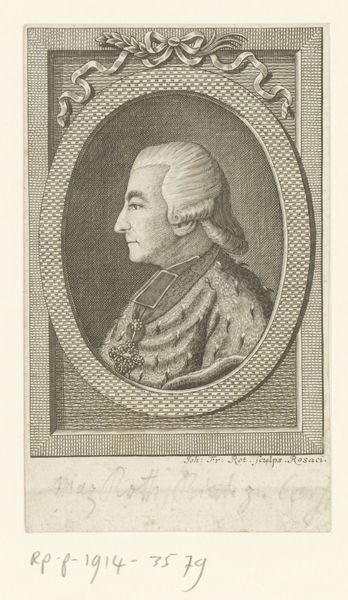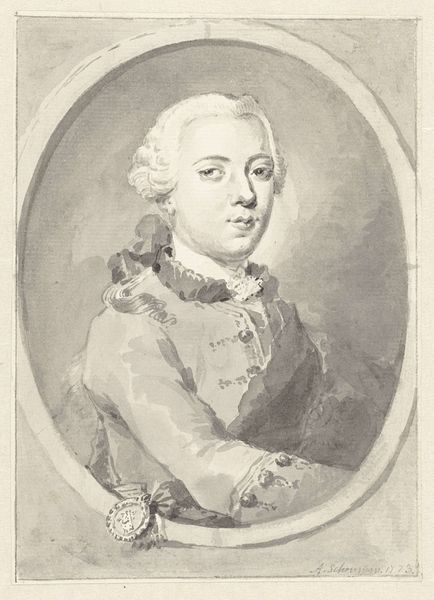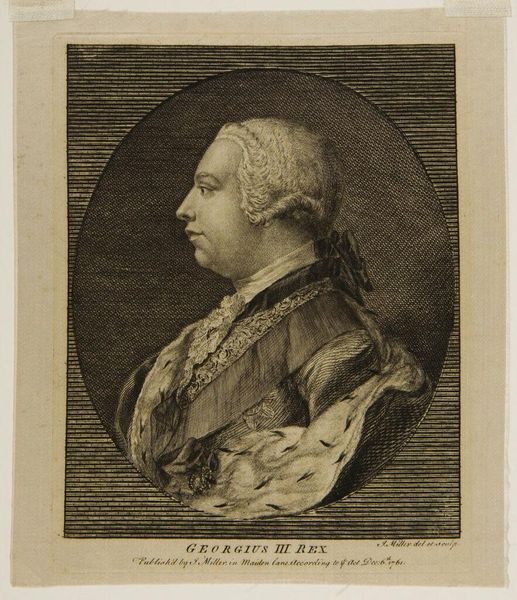
Dimensions: height 83 mm, width 61 mm
Copyright: Rijks Museum: Open Domain
Editor: Here we have an engraving of Willem V, Prince of Orange-Nassau, made sometime between 1775 and 1849. I find the contrast between the fine detail of his face and wig, and the almost crude, scratchy background, quite striking. What elements of its composition stand out to you? Curator: The visual economy is compelling. Notice how the artist used only line and texture to create depth and volume. Consider the varying densities of hatching, how they sculpt the Prince's features and distinguish the fur mantle from the relatively uniform background. It all works together. What do you think of the composition? Does it lack refinement because it's baroque or neoclassicist? Editor: That's interesting. It does seem like it might fall in between movements, borrowing stylistic qualities from each. There's a formal quality about his pose but some looseness too. Do you think the stiffness is because the printmaker worked from a portrait, copying another work? Curator: Perhaps. Note how the stark, frontal lighting emphasizes every contour and plane of the face. Now, look at the Lion on the fur lining, an interesting use of form there too. Why would the Lion head be dead? Does the image reinforce a message of wealth or is it purely for decoration? How does that work within the symbolic order of portraiture? Editor: It seems more for status; it reinforces the subject’s importance, despite seeming a little grim. Considering the lines create value contrasts it certainly makes this work an interesting case study in using a singular form of media. Thanks! Curator: Indeed, paying close attention to the formal aspects can unveil complex aesthetic strategies and artistic goals. A fascinating work.
Comments
No comments
Be the first to comment and join the conversation on the ultimate creative platform.
